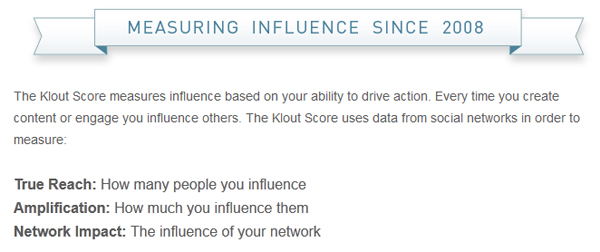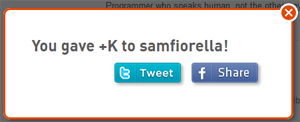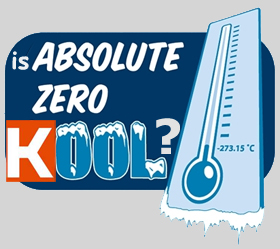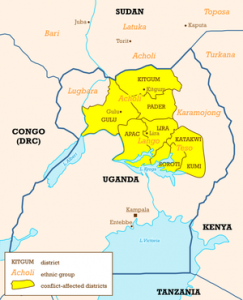 Obamacare, SCOTUS and the Online Veto Button: We all know the power of the “veto” – the ability to simply over-rule all others and say “no” to a particular situation. We see it in many aspects of our lives, from the United Nations Security Council (where it is often used as a political tool) to our own households (where it is often used as a parenting tool). Increasingly, however, we are witnessing a new form of veto in the online/social space, a result of two trends: the Proliferation of Pervasive Communications (#PervasiveComms) and the Rise of Online Activism.
Obamacare, SCOTUS and the Online Veto Button: We all know the power of the “veto” – the ability to simply over-rule all others and say “no” to a particular situation. We see it in many aspects of our lives, from the United Nations Security Council (where it is often used as a political tool) to our own households (where it is often used as a parenting tool). Increasingly, however, we are witnessing a new form of veto in the online/social space, a result of two trends: the Proliferation of Pervasive Communications (#PervasiveComms) and the Rise of Online Activism.
POLITICS AS UNUSUAL
In early 2012, my colleague Alan Berkson and I wrote about the online anti-SOPA/PIPA protests (Stop Online Privacy Act & Protect Online IP bills). In that case, we witnessed a well orchestrated “grass roots” online campaign to stop (preemptively veto?) two pieces of legislation in the US Congress – legislation that very few in Congress had actually read (ironically, the overwhelming majority of the online protestors had not read the legislation either – they were following the lead of a few that they trusted, and ultimately the lead of the movement itself).
I had the opportunity again to dig into an online campaign issue, this time in the form of participating in a Huffington Post Live discussion addressing President Obama’s Affordable Care Act (affectionately known as Obamacare) and the pending decision by the US Supreme Court (SCOTUS) on the Act’s constitutionality (primarily with regard to Interstate Commerce regulations and the Act’s individual health-insurance mandate). While much of the debate about this issue is playing out in traditional media, a series of increasingly vocal debates and online communities have emerged to “rally the troops” in favor of, or against, the Act (side note, both political campaigns have “digital czars” in place).
Here’s the video:
What we are presently witnessing is the development of a massive series of online awareness campaigns designed to coalesce networks of online activists. The main difference today, in contrast to the SOPA/PIPA protests, is that it is two equally strong forces (Republican backers/Democratic backers) who are leading the charge.
While I believe that their ultimate goal is to shape the post-SCOTUS debate (leading up to the election), their message today is one of rallying people to shape the opinions of politicians (likely), the broader public (extremely likely) and the Court itself (incredibly unlikely).
THE VETO IN THE BUSINESS WORLD
In the business world, we’ve seen similar events, the issue of “Net-Neutrality” (that continues to play out in both the public forum and political back offices) being a good example of corporations trying to harness the power of the Web to rally support for their side of the argument.
We’ve also seen individual companies, such as Facebook, Google and BP, become the target of online activist/awareness campaigns – something increasingly being used to shape how, and where, a company does business, from the board-room to Wall Street and beyond.
Toss all this together, with an increasingly sophisticated understanding of how to “mobilize” an online community and leverage the power of “conformity“, and you have the perfect recipe for a crowdsourced online VETO button. The power of the “social” masses to now change the course of politics and business is greater than it has ever been (and will only increase as both politics and business continue to shift from brick-and-mortar/in-person activities to online engagement).
Looking back at HP, and their turmoil over the past year, I can easily see how many of their investors, distributors and consumers would have delighted in the ability to activate an online veto button over the actions of HP’s Board of Directors.
ARE THESE THE RIGHT QUESTIONS?
Some questions to consider:
- Have we actually reached the state of an online VETO button? Is this a good or a bad thing?
- Is it possible to tell the difference between a “manipulated” and “grass roots” information campaign?
- Should politicians and businesses be swayed by online campaigns that may be more “manipulated” than “grass roots”?
- How can misinformation campaigns (that may attempt to influence by false or misleading, but seemingly true, information) be countered?
There are some serious issues that we face as we integrate our digital, online, lives deeper into our offline lives, and there are no easy answers to the questions above (are we even asking the right questions here?). More importantly, does online activism risk getting diluted by non-authentic conformity and a false sense of anonymity?
Image courtesy of DonkeyHotey Licensed via Creative Commons


 I recently had the pleasure of speaking at the #140MTL State of Now conference, on May 15th, 2012, in Montreal, Quebec. It was a fantastic event, with some
I recently had the pleasure of speaking at the #140MTL State of Now conference, on May 15th, 2012, in Montreal, Quebec. It was a fantastic event, with some 
 Is it possible to have a Klout Score of Zero (K = 0)?
Is it possible to have a Klout Score of Zero (K = 0)? 





 When you craft a message, you generally have a target, or audience, in mind. You probably also have an agenda, or goal, that you wish to achieve, such as awareness, education or a call to action. And both the message and the agenda are typically driven by both your own ideas and those embraced by your target audience. Your message must match your audience, or it’s difficult for them to embrace it.
When you craft a message, you generally have a target, or audience, in mind. You probably also have an agenda, or goal, that you wish to achieve, such as awareness, education or a call to action. And both the message and the agenda are typically driven by both your own ideas and those embraced by your target audience. Your message must match your audience, or it’s difficult for them to embrace it.




